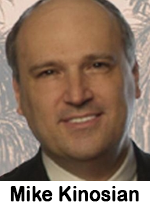 Holiday 2023 PPM Data – Information for the Holiday 2023 ratings period (December 7, 2023 – January 3, 2024) has been released for: Washington, Boston, Miami, Seattle, Detroit, Phoenix, Minneapolis, San Diego, Tampa, Denver, Baltimore, and St. Louis.
Holiday 2023 PPM Data – Information for the Holiday 2023 ratings period (December 7, 2023 – January 3, 2024) has been released for: Washington, Boston, Miami, Seattle, Detroit, Phoenix, Minneapolis, San Diego, Tampa, Denver, Baltimore, and St. Louis.
The only requirement for a spoken-word station to be included below is that they be a Nielsen Audiosubscriber – there are no share or rank thresholds.
NFL; NBA; and NHL team names of corresponding spoken-word flagship(s) are bolded.
DNA – DNA = Did Not Appear – Does Not Appear
Comparisons are December 2023 – Holiday 2023 (6+).
WASHINGTON, DC
News/Talk
WMAL 3.5 – 3.1, #9 – #9
WFED DNA – DNA, DNA – DNA (Capitals)
News
WTOP & WTLP 6.9 – 6.3, #3 – #4
WDCH .5 – .5, #23 – #23
WDCH Stream DNA – DNA, DNA – DNA
Sports Talk
WJFK-FM 2.4 – 2.6, #17 – #15 (Capitals)
WJFK-FM Stream .5 – .6, #23 – #21 (Capitals)
WTEM Stream .2 – .2, #26 – #26 (Wizards)
WTEM .1 – .2, #28 – #26 (Wizards)
WSBN .1 – DNA, #28 – DNA
Public Radio News/Talk
WAMU 11.3 – 11.5, 26th month in succession at #1
The flagship of the Commanders is classic rock WBIG.
BOSTON
News/Talk
WRKO 2.9 – 3.1, #14 – #9
WXKS-AM .8 – .9, #23 – #24
News
News – Talk WBZ-AM 5.1 – 4.7, #5 – #5
Business news WRCA .1 – .1, #27 – #29
Sports Talk
WBZ-FM 9.2 – 9.2, #2 – #2 (New England Patriots, Celtics, Bruins)
WEEI-FM 3.2 – 2.8, #12 – #13
WEEI-FM Stream DNA – .4, DNA – #25
WEEI-AM DNA – .1, DNA – #29
Public Radio News/Talk
WBUR 5.6 – 6.1, #3 – #3
WGBH 4.2 – 3.9, #8 – #6
MIAMI
News/Talk
WIOD 1.4 – 1.2, #22 – #23
News
None
Sports Talk
WQAM 1.2 – 1.3, #24 – #22 (Heat, Florida Panthers)
WINZ .5 – .5, #28 – #27 (Dolphins)
WMEN .1 – .1, #36 – #36
WQAM Stream .1 – .1, #36 – #36 (Heat, Florida Panthers)
WSFS-HD2 DNA – DNA, DNA – DNA
WAXY DNA – DNA, DNA – DNA
Public Radio News/Talk
WLRN 3.6 – 3.3, #8 – #10
WLRN-HD2 DNA – .1, DNA – #36
SEATTLE
News/Talk
KIRO-FM 4.1 – 4.0, #9 – #6 (Seahawks)
KTTH 1.6 – 1.3, #22 – #23
KVI 1.6 – 1.0, #22 – #24
KPTR DNA – DNA, DNA – DNA
News
KNWN-AM & KNWN-FM 2.6 – 2.3, #19 – #20
KHHO DNA – DNA, DNA – DNA
Sports Talk
KIRO-AM 3.0 – 2.8, #16 – #15 (Seahawks)
KJR-FM 3.6 – 2.6, #11 – #17 (Kraken)
KJR-AM .7 – .9, #26 – #25
Public Radio News/Talk
KUOW 6.2 – 6.2, #2 – #3
KSWS .1 – .1, #32 – #32
DETROIT
News/Talk
WJR 2.3 – 2.4, #16 – #15
WFDF .4 – .4, #23 – #23
WJR Stream .2 – .1, #25 – #28
News
WWJ 4.3 – 4.3, #9 – #9 (Pistons)
WWJ Stream .2 – .2, #25 – #26 (Pistons)
WDFN .1 – .1, #30 – #28
Sports Talk
WXYT-FM 9.6 – 8.6, #2 – #2 (Lions, Pistons, Red Wings)
WXYT-FM Stream 1.7 – 1.2, #18 – #19 (Lions, Pistons, Red Wings)
WXYT-AM .2 – .2, #25 – #26
WXYT-AM Stream DNA – DNA, DNA – DNA
Public Radio News/Talk
WDET 1.2 – 1.2, #20 – #19
WUOM 1.0 – 1.1, #21 – #21
PHOENIX
News/Talk
KFYI 3.2 – 2.9, #8 – #8
KTAR-FM 1.8 – 2.2, #23 – #14 (Arizona Cardinals, Suns)
News
None
Sports Talk
KMVP-FM 2.1 – 1.5, #19 – #23 (Suns, Arizona Coyotes)
KDUS .1 – .1, #33 – #32
KGME .1 – .1, #33 – #32
KTAR-AM .1 – .1, #33 – #32 (Arizona Cardinals, Suns, Arizona Coyotes)
KTAR-AM Stream DNA – DNA, DNA – DNA (Arizona Cardinals, Suns, Arizona Coyotes)
KTAR-FM HD2 DNA – DNA, DNA – DNA
Public Radio News/Talk
KJZZ 2.8 – 2.6, #11 – #11
Note: Adult contemporary KESZ’s 18.5 represents the largest (6+) share by any station in the first two rounds of “Holiday” 2023 results.
MINNEAPOLIS
News/Talk
WCCO 4.0 – 3.8, #11 – #10 (Minnesota Timberwolves)
KTMY 2.3 – 1.9, #16 – #17
KTLK-AM 1.7 – 1.6, #17 – #19
WCCO Stream .1 – DNA, #29 – DNA (Minnesota Timberwolves)
News
KQQL-HD2 DNA – .1, DNA – #31
Sports Talk
KFXN 7.6 – 6.8, #3 – #3 (Minnesota Vikings, Minnesota Wild)
KQQL-HD3 .3 – .2, #27 – #27
KSTP-AM .1 – .1, #29 – #31
Public Radio News/Talk
KNOW 5.5 – 5.2, #5 – #4
KNOW Stream .7 – .7, #23 – #23
SAN DIEGO
News/Talk
KOGO 3.8 – 3.9, #9 – #6
KLSD .2 – .3, #26 – #28
News
None
Sports Talk
KWFN 3.4 – 2.8, #11 – #14
KGB-AM 1.0 – 1.0, #21 – #20
KWFN Stream DNA – .1, DNA – #30
Public Radio News/Talk
KPBS 5.9 – 4.7, #4 – #4
TAMPA
News/Talk
WHPT 4.8 – 4.1, #8 – #7 (Lightning)
WFLA 3.9 – 3.2, #10 – #13
News
None
Sports Talk
WDAE 1.9– 1.6, #17 – #18
Public Radio News/Talk
WUSF 1.7 – 1.9, #18 – #17
WMNF-HD3 Stream .4 – .5, #29 – #23
WUSF Stream DNA – DNA, DNA – DNA
Note: Rock WXTB is the flagship of the Buccaneers.
DENVER
News/Talk
KOA 3.1 – 2.7, #13 – #14 (Broncos)
KHOW 1.8 – 1.4, #20 – #19
KDFD 1.4 – 1.3, #22 – #22
News
None
Sports Talk
KKFN 3.8 – 3.5, #10 – #10
KKSE-FM 2.4 – 2.0, #16 – #18 (Nuggets, Colorado Avalanche)
KEPN .1 – .1, #35 – #35
KKSE-AM .1 – DNA, #35 – DNA
KAMP DNA – DNA, DNA – DNA
Public Radio News/Talk
KCFR 2.7 – 3.0, #14 – #13
KUNC .4 – .7, #30 – #26
Note: Adult contemporary KOSI’s +6.4 (10.1- 16.5) represents a tie for the largest (6+) December 2023 – “Holiday” 2023 increase by any station in these 12 PPM-markets.
BALTIMORE
News/Talk
WBAL 3.4 – 2.7, #10 – #11 (Ravens)
WCBM 1.6 – 1.5, #17 – #17
News
WTOP & WTLP 1.1 – 1.0, #18 – #20
WDCH .8 – .8, #21 – #22
WQLL DNA – DNA, DNA – DNA
Sports Talk
WJZ-FM 4.2 – 4.5, #8 – #6
WJZ-FM Stream DNA – .1, DNA – #31
WJZ-AM DNA – DNA, DNA – DNA
Public Radio News/Talk
WYPR 3.3 – 3.4, #11 – #9
WYPR HD2 Stream .2 – .2, #26 – #28
Note: CHR WWMX’s -2.3 (5.3 – 3.0) is the largest (6+) December 2023 – “Holiday” 2023 decrease by any station in the first two rounds of “Holiday” 2023 results.
ST. LOUIS
News/Talk
KMOX 3.0 – 2.8, #13 – #14
KFTK 1.6 – 1.5, #17 – #17
KTLK-FM 1.1 – 1.1, #18 – #18
KMOX Stream .3 – .2, #23 – #24
KFTK Stream .2 – .2, #25 – #24
News
KATZ-FM HD2 .3 – .2, #23 – #24
Sports Talk
WXOS 4.1 – 3.9, #11 – #12 (Blues)
Public Radio News/Talk
KWMU 4.0 – 4.5, #12 – #8
Note: Adult contemporary KEZK’s +6.4 (9.3- 15.7) represents a tie for the largest (6+) December 2023 – “Holiday” 2023 increase by any station in these 12 PPM-markets.
Up next: “Holiday” 2023 overviews for Portland; Charlotte; San Antonio; Sacramento; Pittsburgh; Salt Lake City; Las Vegas; Orlando; Cincinnati; Cleveland; Kansas City; and Columbus.
Reach Mike Kinosian at: Mike.Kinosian@gmail.com
Share this with your network



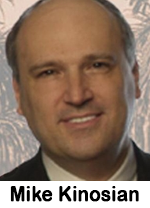 The second of four rounds of ratings data from Nielsen Audio’s March 2024 PPM survey has been released for 12 markets including Washington, Boston, Miami, Seattle, Detroit, Phoenix, Minneapolis, San Diego, Tampa, Denver, Baltimore, and St. Louis. The survey covered February 29 through March 27. Today, TALKERS magazine managing editor Mike Kinosian presents his Ratings Takeaways from this group of markets. In Washington, Cumulus Media news/talk WMAL-FM rises three-tenths to finish the survey with a 4.8 share (weekly, 6+ AQH share) that lifts it to the #5 rank, while Hubbard Broadcasting all-news WTOP-FM adds three-tenths for a 7.9 share and remains ranked #2. In Detroit, Cumulus Media news/talk WJR dips two-tenths to finish with a 2.3 share but remains ranked #14, while Audacy’s all-news WWJ is steady with a 5.3 share that keeps it ranked #9 in the market. In Phoenix, iHeartMedia news/talk KFYI falls half a share to a 3.0 share and moves back one spot to the #10 rank, while Bonneville news/talk KTAR-FM also loses a half share, finishing with a 2.2 share good for the #18 rank.
The second of four rounds of ratings data from Nielsen Audio’s March 2024 PPM survey has been released for 12 markets including Washington, Boston, Miami, Seattle, Detroit, Phoenix, Minneapolis, San Diego, Tampa, Denver, Baltimore, and St. Louis. The survey covered February 29 through March 27. Today, TALKERS magazine managing editor Mike Kinosian presents his Ratings Takeaways from this group of markets. In Washington, Cumulus Media news/talk WMAL-FM rises three-tenths to finish the survey with a 4.8 share (weekly, 6+ AQH share) that lifts it to the #5 rank, while Hubbard Broadcasting all-news WTOP-FM adds three-tenths for a 7.9 share and remains ranked #2. In Detroit, Cumulus Media news/talk WJR dips two-tenths to finish with a 2.3 share but remains ranked #14, while Audacy’s all-news WWJ is steady with a 5.3 share that keeps it ranked #9 in the market. In Phoenix, iHeartMedia news/talk KFYI falls half a share to a 3.0 share and moves back one spot to the #10 rank, while Bonneville news/talk KTAR-FM also loses a half share, finishing with a 2.2 share good for the #18 rank. 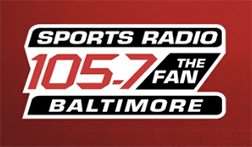 important sports moments and “105.7 The Fan” personalities’ favorite memories. Celebratory programming includes two live broadcasts of the “Big Bad Morning Show” hosted by
important sports moments and “105.7 The Fan” personalities’ favorite memories. Celebratory programming includes two live broadcasts of the “Big Bad Morning Show” hosted by 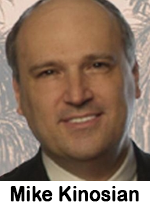 The second of four rounds of ratings data from Nielsen Audio’s February 2024 PPM survey has been released for 12 markets including Washington, Boston, Miami, Seattle, Detroit, Phoenix, Minneapolis, San Diego, Tampa, Denver, Baltimore, and St. Louis. The survey covered February 1 – 28. Today, TALKERS magazine managing editor Mike Kinosian presents his Ratings Takeaways for this group of markets. In Washington, Cumulus Media’s news/talk WMAL-FM is steady at a 4.5 share (6+, weekly AQH share) and remains ranked #7, while Hubbard Broadcasting’s all-news WTOP-FM, sheds seven-tenths for a 7.6 share but stays ranked #2 in the market. In Boston, iHeartMedia’s news/talk WRKO adds four-tenths to finish with a 3.2 share that lifts it to the #13 rank, while sister all-news WBZ-FM rises three-tenths for a 4.9 share but remains ranked #6. In Detroit, Cumulus Media’s news/talk WJR tacks on four-tenths to finish the survey with a 2.5 share and moves up to the #14 rank, while Audacy’s all-news WWJ loses three-tenths, wrapping the survey with a 5.3 share and falling one spot to the #9 rank.
The second of four rounds of ratings data from Nielsen Audio’s February 2024 PPM survey has been released for 12 markets including Washington, Boston, Miami, Seattle, Detroit, Phoenix, Minneapolis, San Diego, Tampa, Denver, Baltimore, and St. Louis. The survey covered February 1 – 28. Today, TALKERS magazine managing editor Mike Kinosian presents his Ratings Takeaways for this group of markets. In Washington, Cumulus Media’s news/talk WMAL-FM is steady at a 4.5 share (6+, weekly AQH share) and remains ranked #7, while Hubbard Broadcasting’s all-news WTOP-FM, sheds seven-tenths for a 7.6 share but stays ranked #2 in the market. In Boston, iHeartMedia’s news/talk WRKO adds four-tenths to finish with a 3.2 share that lifts it to the #13 rank, while sister all-news WBZ-FM rises three-tenths for a 4.9 share but remains ranked #6. In Detroit, Cumulus Media’s news/talk WJR tacks on four-tenths to finish the survey with a 2.5 share and moves up to the #14 rank, while Audacy’s all-news WWJ loses three-tenths, wrapping the survey with a 5.3 share and falling one spot to the #9 rank. 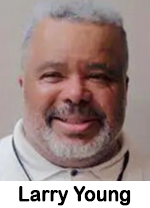 pm to 6:00 pm show. Young served for years as the station’s morning drive host and retired from that position at the end of 2022. Young has been producing a weekly podcast that drops Wednesday mornings, a project he will continue.
pm to 6:00 pm show. Young served for years as the station’s morning drive host and retired from that position at the end of 2022. Young has been producing a weekly podcast that drops Wednesday mornings, a project he will continue.  The second of four rounds of ratings data from Nielsen Audio’s January 2024 PPM survey has been released for 12 markets including Washington, Boston, Miami, Seattle, Detroit, Phoenix, Minneapolis, San Diego, Tampa, Denver, Baltimore, and St. Louis. The survey period covered January 4 – 31. Today, TALKERS magazine managing editor Mike Kinosian presents his Ratings Takeaways from this group of markets. In Washington, Cumulus Media Group’s news/talk WMAL-FM jumps 1.4 shares to finish with a 4.5 share (weekly, 6+ AQH share) that lifts it to the #7 rank, while Hubbard Broadcasting’s all-news WTOP-FM leaps two full shares to an 8.3 share good for the #2 rank. In Phoenix, iHeartMedia’s news/talk KFYI rises two-tenths to a 3.1 share but falls two posts to the #10 rank, while Bonneville’s news/talk KTAR-FM adds four-tenths for a 2.6 share finish and remains ranked #14. In Baltimore, Hearst Television’s news/talk WBAL-AM adds 1.6 shares to finish with a 4.3 share that boosts it to the #9 rank, while WCBM Maryland’s news/talk WCBM-AM tacks on four-tenths for a 1.9 share finish that lifts it to the #15 rank.
The second of four rounds of ratings data from Nielsen Audio’s January 2024 PPM survey has been released for 12 markets including Washington, Boston, Miami, Seattle, Detroit, Phoenix, Minneapolis, San Diego, Tampa, Denver, Baltimore, and St. Louis. The survey period covered January 4 – 31. Today, TALKERS magazine managing editor Mike Kinosian presents his Ratings Takeaways from this group of markets. In Washington, Cumulus Media Group’s news/talk WMAL-FM jumps 1.4 shares to finish with a 4.5 share (weekly, 6+ AQH share) that lifts it to the #7 rank, while Hubbard Broadcasting’s all-news WTOP-FM leaps two full shares to an 8.3 share good for the #2 rank. In Phoenix, iHeartMedia’s news/talk KFYI rises two-tenths to a 3.1 share but falls two posts to the #10 rank, while Bonneville’s news/talk KTAR-FM adds four-tenths for a 2.6 share finish and remains ranked #14. In Baltimore, Hearst Television’s news/talk WBAL-AM adds 1.6 shares to finish with a 4.3 share that boosts it to the #9 rank, while WCBM Maryland’s news/talk WCBM-AM tacks on four-tenths for a 1.9 share finish that lifts it to the #15 rank. 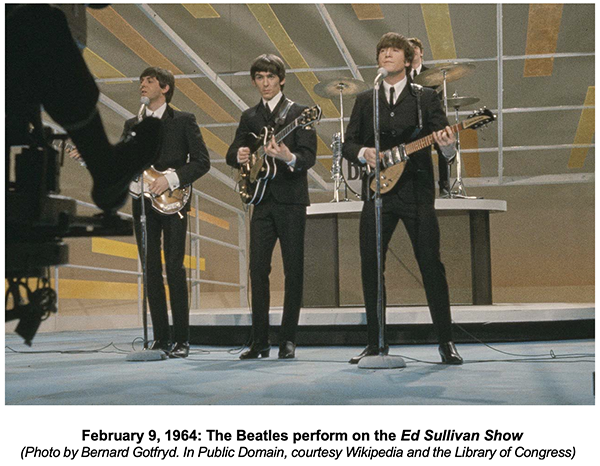
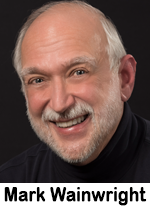 In early December 1963, America was a very gloomy place. The assassination of President John F. Kennedy on November 22 brought the country to a virtual standstill for four days, and the emotional and psychological hangover lingered for weeks. The nation needed a dose of uplifting energy and fun, and the Beatles were the ideal remedy.
In early December 1963, America was a very gloomy place. The assassination of President John F. Kennedy on November 22 brought the country to a virtual standstill for four days, and the emotional and psychological hangover lingered for weeks. The nation needed a dose of uplifting energy and fun, and the Beatles were the ideal remedy.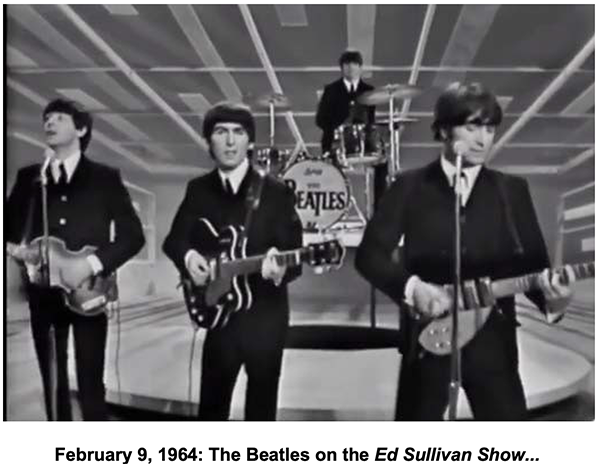
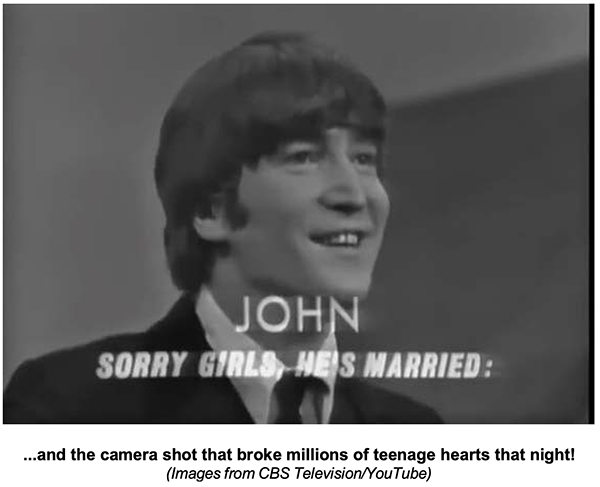
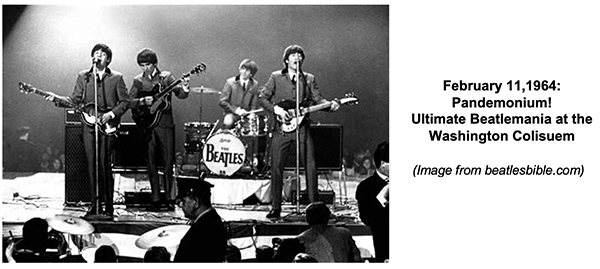
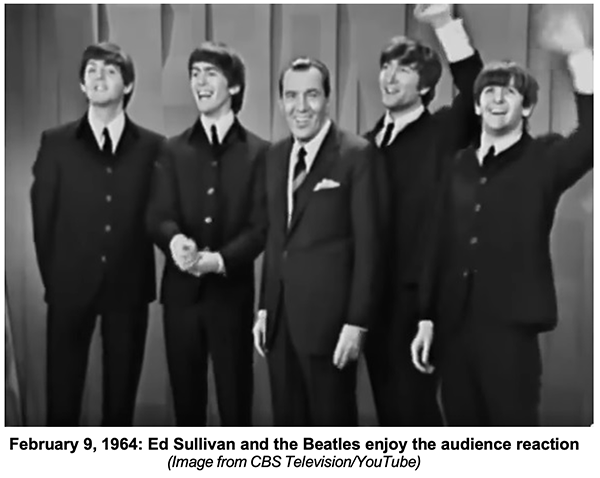
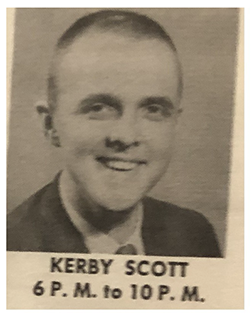 1964 WCAO Promotional Material: “Kerby Scott photo
1964 WCAO Promotional Material: “Kerby Scott photo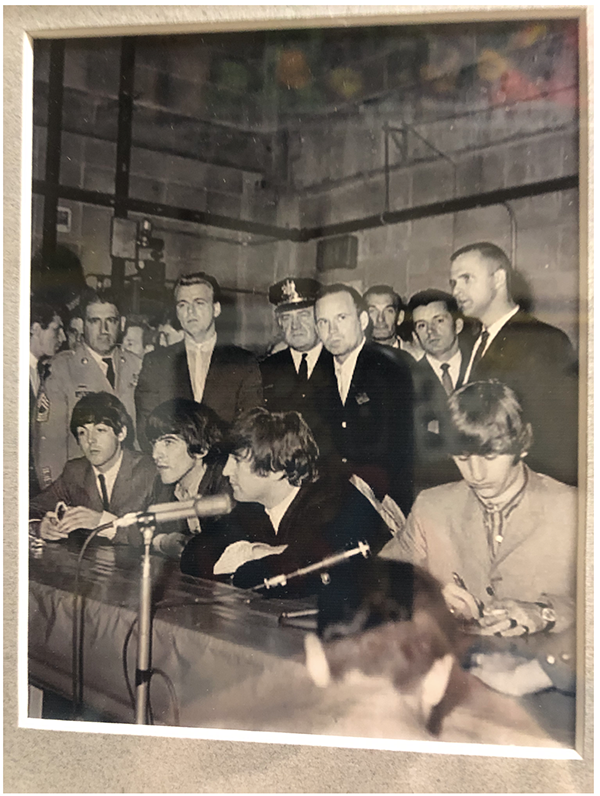
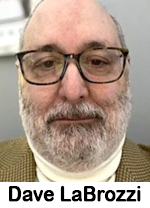 and I would have never imagined that all of my dreams would be multiplied by two. I was blessed with an amazing journey; from Emporium to New York City and every city in between including Nashville, Dallas, San Antonio, Austin, Baltimore and Pittsburgh…. The best part of my job was working with some of the best talent in the country. I tried to never get in their way, and I listened in awe to what they created daily. They were the reason for my success, and I am thankful for the privilege of tagging along… The time has come for me to walk away, and I do so with the deepest appreciation. If I worked with you, I hope you can say that I gave you my best and that I helped you succeed. I know my life was richer because of you and I will cherish the memories we created together. Thank you! Now, about that last break…”
and I would have never imagined that all of my dreams would be multiplied by two. I was blessed with an amazing journey; from Emporium to New York City and every city in between including Nashville, Dallas, San Antonio, Austin, Baltimore and Pittsburgh…. The best part of my job was working with some of the best talent in the country. I tried to never get in their way, and I listened in awe to what they created daily. They were the reason for my success, and I am thankful for the privilege of tagging along… The time has come for me to walk away, and I do so with the deepest appreciation. If I worked with you, I hope you can say that I gave you my best and that I helped you succeed. I know my life was richer because of you and I will cherish the memories we created together. Thank you! Now, about that last break…” The second of four rounds of ratings data from Nielsen Audio’s Holiday 2023 PPM survey has been released for 12 markets including Washington, Boston, Miami, Seattle, Detroit, Phoenix, Minneapolis, San Diego, Tampa, Denver, Baltimore, and St. Louis. The survey period covered December 7, 2023 – January 3, 2024. Today, TALKERS magazine managing editor Mike Kinosian presents his Ratings Takeaways from this group of markets. In Washington, Cumulus Media’s news/talk WMAL-FM dips four-tenths to a 3.1 share (weekly, 6+ AHQ share) but remains ranked #9, while Hubbard Broadcasting’s all-news WTOP-FM loses three-tenths to finish with a 6.3 share good for the #4 rank. In Boston, iHeartMedia’s news/talk WRKO added two-tenths for a 3.1 share finish that lifts it to the #9 rank, while sister all-news WBZ-AM declines four-tenths to a 4.7 share but remains ranked #5. In Detroit, Cumulus Media’s news/talk WJR rises one-tenth to a 2.4 share and climbs to the #15 rank, while Audacy’s all-news WWJ is steady at a 4.3 share and remains ranked #9.
The second of four rounds of ratings data from Nielsen Audio’s Holiday 2023 PPM survey has been released for 12 markets including Washington, Boston, Miami, Seattle, Detroit, Phoenix, Minneapolis, San Diego, Tampa, Denver, Baltimore, and St. Louis. The survey period covered December 7, 2023 – January 3, 2024. Today, TALKERS magazine managing editor Mike Kinosian presents his Ratings Takeaways from this group of markets. In Washington, Cumulus Media’s news/talk WMAL-FM dips four-tenths to a 3.1 share (weekly, 6+ AHQ share) but remains ranked #9, while Hubbard Broadcasting’s all-news WTOP-FM loses three-tenths to finish with a 6.3 share good for the #4 rank. In Boston, iHeartMedia’s news/talk WRKO added two-tenths for a 3.1 share finish that lifts it to the #9 rank, while sister all-news WBZ-AM declines four-tenths to a 4.7 share but remains ranked #5. In Detroit, Cumulus Media’s news/talk WJR rises one-tenth to a 2.4 share and climbs to the #15 rank, while Audacy’s all-news WWJ is steady at a 4.3 share and remains ranked #9. 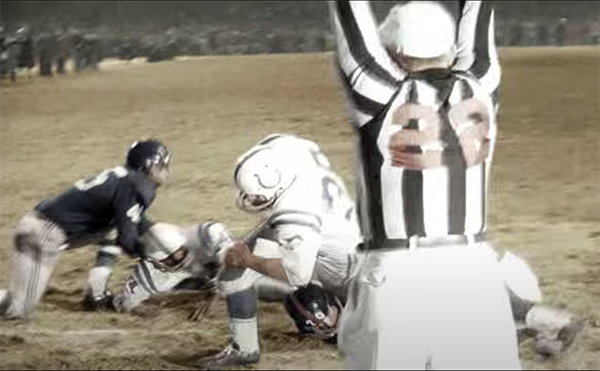
 It was one of those indelible moments in sports history: The 1958 NFL Championship, played on December 28, 1958 at Yankee Stadium in New York. The Baltimore Colts defeated the New York Giants 23-17 in sudden death overtime. 65 years later, the events of that Sunday afternoon still resonate throughout pro sports and sports media.
It was one of those indelible moments in sports history: The 1958 NFL Championship, played on December 28, 1958 at Yankee Stadium in New York. The Baltimore Colts defeated the New York Giants 23-17 in sudden death overtime. 65 years later, the events of that Sunday afternoon still resonate throughout pro sports and sports media.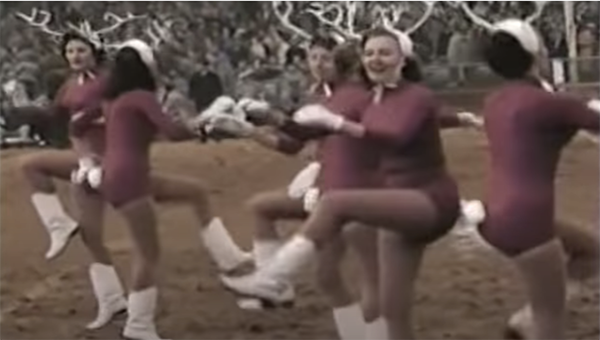
 The second of four rounds of ratings information from Nielsen Audio’s November PPM survey has been released for 12 markets including Washington, Boston, Miami, Seattle, Detroit, Phoenix, Minneapolis, San Diego, Tampa, Denver, Baltimore, and St. Louis. The survey period ran from October 12 through November 8. Today, TALKERS magazine managing editor Mike Kinosian presents his Ratings Takeaways from this group of markets. In Washington, Cumulus Media’s news/talk WMAL-FM is up six-tenths for a 4.6 share (weekly, 6+ AQH share) finish that lifts it to the #6 rank, while Hubbard Broadcasting’s all-news WTOP-FM declines seven-tenths to a 7.4 share as it falls to the #3 rank after 10 months at #2. In Seattle, Bonneville’s news/talk KIRO-FM adds half a share to finish with a 4.7 share that lifts it to the #6 rank, while Lotus Communications’ all-news KNWN-AM/FM rises four-tenths for a 2.6 share good for the #18 rank. In Phoenix, iHeartMedia news/talk KFYI falls seven-tenths to a 3.3 share that leaves it ranked #11, while Bonneville’s news/talk KTAR-FM tacks on three-tenths for a 2.7 share finish that lifts it to the #14 rank.
The second of four rounds of ratings information from Nielsen Audio’s November PPM survey has been released for 12 markets including Washington, Boston, Miami, Seattle, Detroit, Phoenix, Minneapolis, San Diego, Tampa, Denver, Baltimore, and St. Louis. The survey period ran from October 12 through November 8. Today, TALKERS magazine managing editor Mike Kinosian presents his Ratings Takeaways from this group of markets. In Washington, Cumulus Media’s news/talk WMAL-FM is up six-tenths for a 4.6 share (weekly, 6+ AQH share) finish that lifts it to the #6 rank, while Hubbard Broadcasting’s all-news WTOP-FM declines seven-tenths to a 7.4 share as it falls to the #3 rank after 10 months at #2. In Seattle, Bonneville’s news/talk KIRO-FM adds half a share to finish with a 4.7 share that lifts it to the #6 rank, while Lotus Communications’ all-news KNWN-AM/FM rises four-tenths for a 2.6 share good for the #18 rank. In Phoenix, iHeartMedia news/talk KFYI falls seven-tenths to a 3.3 share that leaves it ranked #11, while Bonneville’s news/talk KTAR-FM tacks on three-tenths for a 2.7 share finish that lifts it to the #14 rank.